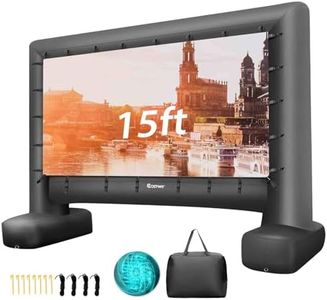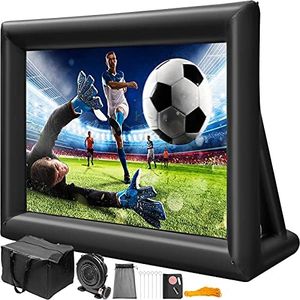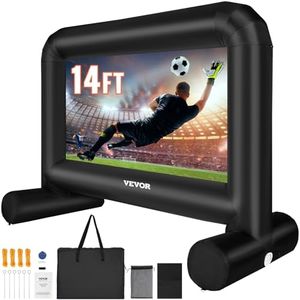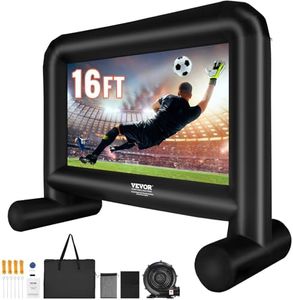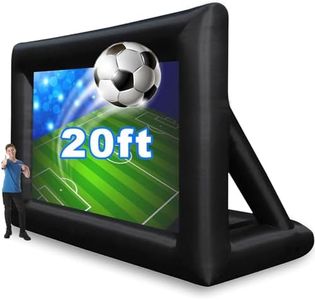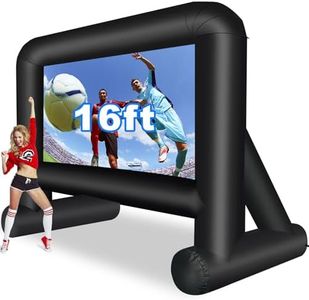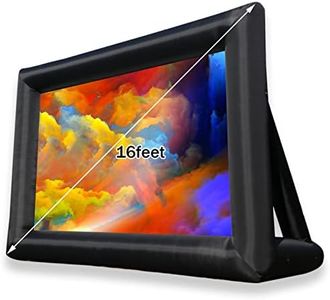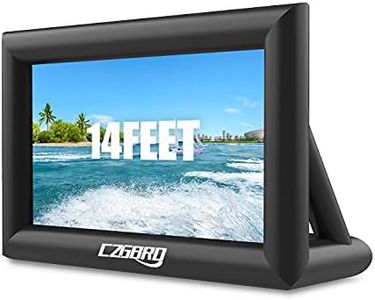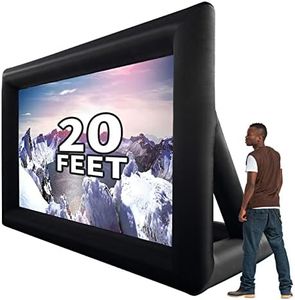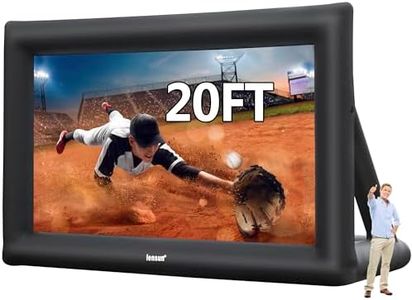We Use CookiesWe use cookies to enhance the security, performance,
functionality and for analytical and promotional activities. By continuing to browse this site you
are agreeing to our privacy policy
10 Best Inflatable Movie Screens
From leading brands and best sellers available on the web.Buying Guide for the Best Inflatable Movie Screens
Choosing an inflatable movie screen can transform your movie nights, backyard events, or even presentations into memorable experiences. The right screen will depend on your space, the number of viewers, and how you plan to use it – whether it's for cozy family gatherings or larger community get-togethers. Think about where you'll set it up, how often you’ll use it, and what equipment you already have. With the right approach, you’ll find a screen that meets your needs and brings your viewing experiences to the next level.Screen SizeScreen size refers to the actual viewing area, usually measured diagonally or by width and height. This spec is important because it dictates how many people can comfortably view the content. Smaller screens, up to about 100 inches, are great for family use in smaller spaces. Medium screens, from 100 to 150 inches, cater to larger gatherings in backyards or small parks. Oversized screens above 150 inches are best for events with bigger crowds or more open spaces. To pick the right size, consider your space – a large screen needs more distance between viewers and the screen, while a smaller one is more flexible and easier to fit in tighter spots.
Material QualityThe screen material affects image clarity, brightness, and durability. Common materials include PVC and Oxford fabric. Higher quality materials provide a smoother, brighter, and more vivid picture, which is especially important if you will be watching in less-than-perfect lighting. Thicker, weather-resistant fabrics are better for outdoor settings and frequent use, while thinner materials are often lighter and easier to store but may not perform as well. If you plan to use the screen mostly outside or want sharper images, look for durable, high-gain materials; for occasional, indoor use, standard materials usually suffice.
Aspect RatioAspect ratio is the relationship between the width and height of the screen, typically given as 16:9 (similar to most modern TVs and projectors) or 4:3 (more traditional). This spec matters because it impacts how films or video content will appear – a mismatch can leave you with black bars or cut-off images. For most movie and streaming content, 16:9 is the standard choice; if you mainly use the screen for classic films or presentations, you might prefer 4:3. Choose the aspect ratio that aligns with your usual viewing habits for the best visual experience.
Ease of SetupEase of setup includes how quickly and simply you can inflate, anchor, and take down the screen. Some inflatable screens use manual pumps, while others come with electric blowers for fast setup. The faster and easier the setup, the more likely you are to use the screen frequently and avoid frustration. If you’re planning to move the screen often or set it up alone, look for features like quick-inflate fans, simple anchoring systems, and lightweight designs.
Stability and Wind ResistanceStability is crucial for outdoor screens to stay upright and secure, especially in windy conditions. This depends on the anchoring system, weight, and shape. Features like ground stakes, tie-downs, and thick frames improve stability. Smaller, lighter screens may be easier to handle but can be more susceptible to wind, while heavier and well-anchored models offer greater peace of mind for outdoor events. If you expect to use the screen outside often, especially in breezy areas, prioritize robust stability features.
Portability and StoragePortability covers how easy it is to move, transport, and store the screen. This involves not just weight but also whether it comes with a carrying bag and how compact it folds down. If you need to travel with your screen or have limited storage space, look for models designed to pack small and light. For setups that will remain in one place, heavier and bulkier screens may not pose an issue.
